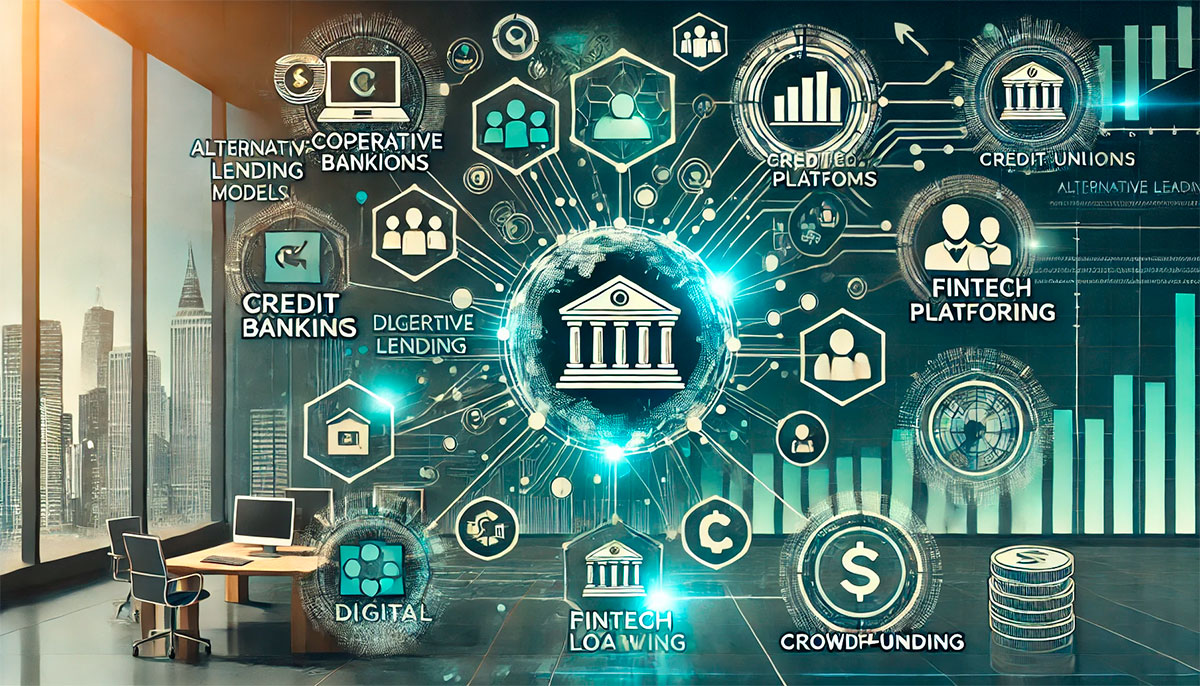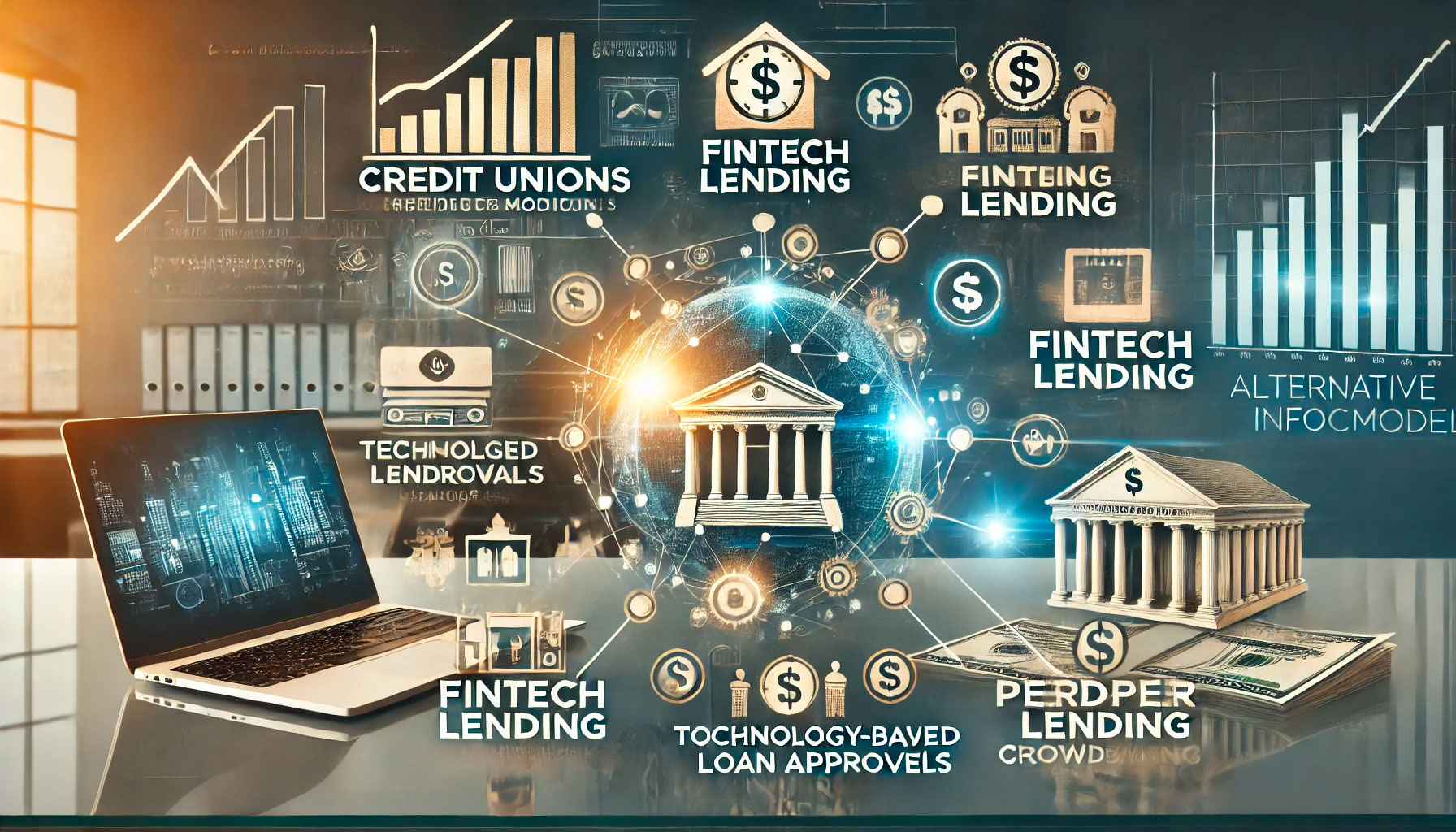The traditional banking system has long been the dominant model for lending, where financial institutions such as commercial banks assess creditworthiness and provide loans to consumers and businesses. However, in recent years, alternative lending models have gained significant traction, providing new and innovative ways for individuals and businesses to access capital. These alternative models include credit unions, fintech companies, and crowdfunding platforms, each offering unique advantages and addressing gaps in the traditional lending landscape. This article explores the role of these alternative lending models in the modern financial ecosystem and how they are reshaping the way credit is distributed.
Credit Unions: Community-Focused Lending
Credit unions are member-owned financial cooperatives that provide a range of financial services, including loans, to their members. Unlike traditional banks, which are profit-driven, credit unions are focused on serving the needs of their members and reinvesting profits back into the community. This cooperative model allows credit unions to offer lower interest rates on loans and more flexible terms, making them an attractive option for borrowers, particularly those who may not qualify for credit from traditional banks.
One of the key advantages of credit unions is their community-focused approach. Credit unions typically serve specific communities or groups, such as employees of a particular company, residents of a specific region, or members of a particular organization. This local focus allows credit unions to develop a deeper understanding of the financial needs and challenges of their members, resulting in more personalized service and lending decisions. Additionally, credit unions often have lower overhead costs compared to traditional banks, enabling them to offer more competitive loan rates.
While credit unions are an excellent alternative for individuals seeking affordable loans, they also play a crucial role in fostering financial inclusion. By offering loans to underserved populations, such as those with poor credit histories or limited access to traditional banking services, credit unions help promote greater financial equity and support local economic development. However, credit unions do have some limitations, such as membership requirements and fewer digital services compared to larger financial institutions.
Fintech Companies: Technology-Driven Innovation in Lending
Financial technology companies, or fintechs, have revolutionized the lending landscape by leveraging technology to streamline the lending process and make credit more accessible. Fintech companies use advanced algorithms, big data, and artificial intelligence to assess credit risk and offer personalized lending solutions. By reducing the reliance on traditional credit scores and offering fast, digital-first experiences, fintechs have made borrowing more convenient and accessible for a broader range of individuals and businesses.
One of the major benefits of fintech lending is the speed and convenience it offers. Traditional banks often require extensive paperwork, lengthy approval processes, and physical visits to branches. In contrast, fintech platforms allow borrowers to apply for loans online and receive approval within minutes, with funds disbursed quickly. This speed makes fintech loans especially attractive to consumers and small businesses that need quick access to capital.
Additionally, fintechs have expanded access to credit for individuals with less-than-perfect credit histories. Many fintech companies use alternative data sources, such as social media activity, transaction history, and even education or employment records, to assess creditworthiness. This data-driven approach enables fintechs to offer loans to individuals who may not qualify for credit from traditional banks, thus promoting greater financial inclusion.
Despite their many advantages, fintech companies face some challenges, including regulatory hurdles, data privacy concerns, and competition from traditional financial institutions. Additionally, while fintech platforms may offer lower fees and faster approval times, their interest rates can sometimes be higher than those of credit unions or traditional banks, particularly for riskier borrowers.

Crowdfunding: A New Way to Access Capital
Crowdfunding has emerged as another innovative alternative lending model, where individuals and businesses can raise funds by soliciting small contributions from a large number of people, typically through online platforms. Crowdfunding platforms like Kickstarter, GoFundMe, and Indiegogo have gained popularity for their ability to connect borrowers with a wide pool of potential lenders or investors. Crowdfunding offers a unique opportunity for borrowers to access capital without going through traditional financial institutions.
One of the primary advantages of crowdfunding is that it allows borrowers to bypass traditional gatekeepers, such as banks or venture capitalists, and secure funding directly from the public. This is particularly beneficial for startups, small businesses, and entrepreneurs who may struggle to secure loans from traditional sources. Crowdfunding also provides a platform for borrowers to showcase their ideas, products, or causes to a global audience, creating opportunities for exposure and marketing in addition to financing.
There are several types of crowdfunding models, including donation-based, rewards-based, equity-based, and debt-based crowdfunding. In donation-based crowdfunding, contributors provide funds without expecting any financial return, while in rewards-based crowdfunding, backers receive non-financial rewards, such as early access to products or services. In equity-based and debt-based crowdfunding, investors or lenders provide funds in exchange for ownership stakes or interest-bearing loans, respectively.
While crowdfunding offers exciting opportunities for borrowers, it also comes with risks. Success on crowdfunding platforms is often contingent on a borrower’s ability to present a compelling case to potential backers. In addition, crowdfunding campaigns are time-sensitive and may not always reach their funding goals, leaving borrowers without the capital they need. Furthermore, regulatory challenges and concerns around transparency and fraud have raised questions about the long-term sustainability of crowdfunding as a lending model.
The Future of Alternative Lending
As alternative lending models continue to evolve, they are expected to play an increasingly important role in the global financial ecosystem. The rise of fintech companies, the continued growth of crowdfunding platforms, and the enduring value of credit unions are all contributing to a more diverse and accessible lending landscape. These alternative models provide individuals and businesses with greater flexibility, lower barriers to entry, and more personalized lending options, making them an attractive choice for borrowers in many parts of the world.
However, as with any financial model, alternative lending platforms face challenges, including regulatory oversight, competition, and ensuring borrower protection. Moving forward, regulators will need to strike a balance between fostering innovation and ensuring consumer protection. By developing frameworks that encourage transparency, data security, and fair lending practices, regulators can help create a sustainable and equitable lending environment for all stakeholders.
Conclusion: Redefining Lending for a Modern Economy
In conclusion, alternative lending models such as credit unions, fintech companies, and crowdfunding are reshaping the way individuals and businesses access credit. These models provide unique advantages, from more affordable loan options to faster approval times and increased financial inclusion. As these alternative lending platforms continue to grow, they will play a crucial role in making credit more accessible, transparent, and tailored to the needs of modern borrowers. Whether through the community-focused approach of credit unions, the technology-driven innovation of fintechs, or the democratizing power of crowdfunding, alternative lending is redefining the financial landscape and offering new pathways to capital for those who need it most.

